Education & Outreach
Gulf of Mexico Curriculum

Deep Sea to Coast Connectivity: Utilizing scientific research to help students make connections between the theoretical nature of science and real world applications
The Gulf of Mexico multidisciplinary curriculum was developed around the five main research areas of the Deep-C Consortium: geomorphology, geochemistry, ecology, physical oceanography, and modeling. Each module includes five cumulative lessons, background information on the topic, relevant supplementary reading materials, a glossary, and an assessment. The purpose of this curriculum is to:
- Provide teachers with a user-friendly curriculum that will introduce students to real-world applications of science as well as specific examples of environmental disasters – their impacts on ocean ecosystems as well as nature’s ability to and mechanisms for recovering from such events.
- Synthesize some of the Deep-C Consortium’s research efforts, to date.
- Increase Gulf of Mexico literacy.
It is our hope that this curriculum can serve as a model for future curricula developed based off of scientific research endeavors.
Contributing experts are listed throughout curriculum. Many thanks to these Deep-C researchers and students who edited, authored content, or assisted with development of the lesson plans.
Aligned with Ocean Literacy Principles and the Next Generation Sunshine State Standards
Ocean Literacy: The Essential Principles of Ocean Sciences for Learners of All Ages, Version 2 was published in March 2013. http://oceanliteracy.wp2.coexploration.org/
Next Generation Sunshine State Standards: CPALMS is the state of Florida’s official source for standards
information and course descriptions. http://www.cpalms.org/Public/
Click here to download a PDF of the entire curriculum ![]() (~11.5mb)
(~11.5mb)
OR you can download individual modules using the links below.
| Table of Contents
Geomorphology Module...............................................................................................................................Pages 4-39 Geochemistry Module................................................................................................................................. Pages 40-63 Ecology Module..............................................................................................................................................Pages 64-88 Physical Oceanography Module Module............................................................................................... Pages 89-116 Computer Modeling................................................................................................................................... Pages 117-138 |
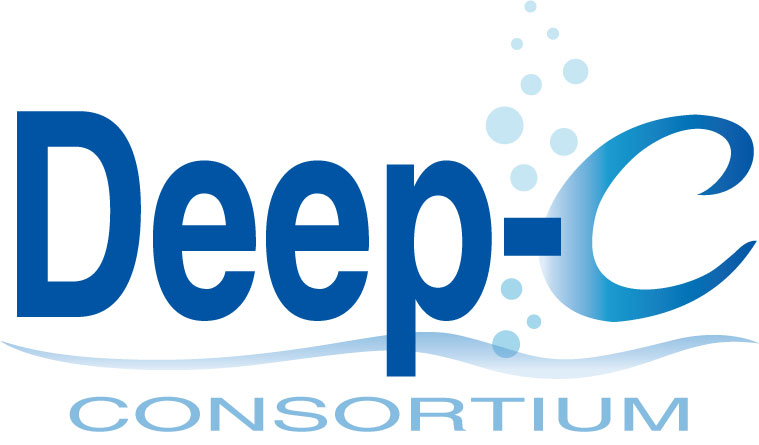 The Deep-C Consortium conducted an interdisciplinary study of deep sea to coast connectivity in the northeastern Gulf of Mexico. |
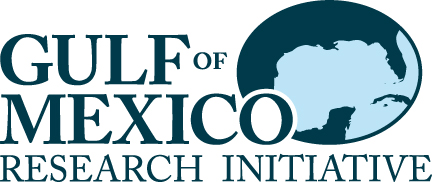 This research was made possible by a grant from BP/The Gulf of Mexico Research Initiative to the Deep-C Consortium |
For questions or feedback, email This email address is being protected from spambots. You need JavaScript enabled to view it.
Internship Program
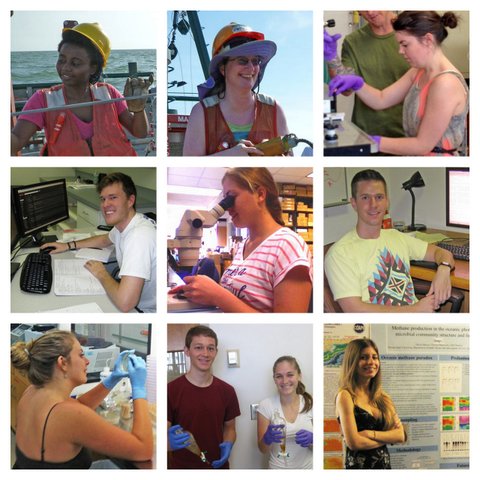 During the course of Deep-C's three-year research effort, the project offered internships. The internship program carefully matched educators and students majoring in STEM (Science, Technology, Engineering and Mathematics) fields to research opportunities proposed by Deep-C scientists at the various Deep-C educational member institutions.
During the course of Deep-C's three-year research effort, the project offered internships. The internship program carefully matched educators and students majoring in STEM (Science, Technology, Engineering and Mathematics) fields to research opportunities proposed by Deep-C scientists at the various Deep-C educational member institutions.
The program offered participants opportunities to conduct research in various fields of science as well as gain real-world experience working with scientists on projects that support the Deep-C mission. Internships varyed in focus and duration (anywhere from a week to a semester) based upon the needs of participating host scientists. Below you will find links to some of the internships offered, along with blog posts by the participants.
DEEP-C RESEARCH INTERNSHIPS ARE NO LONGER AVAILABLE.
Past Research Internships
Title: Fish Diversity in the Deep Gulf of Mexico
Host: Dr. Chip Cotton
Location: Florida State University Coastal and Marine Laboratory, St. Teresa, FL
Semester: Summer 2014
Intern: Erica Levine (Blog)
Title: Deep-C Web GIS Map Viewer
Host: Olmo Zavala-Romero
Location: Florida State University, Center for Ocean-Atmospheric Prediction Studies, Tallahassee, FL
Semester: Summer 2014
Intern: Harshul Pandav (Blog)
Title: Supporting Earth-System-Model Data Processing, Validation, and Analysis of Multiple Model Experiments Followed by Scientific Evaluation of Results
Host: Dr. Sergio deRada
Location: Naval Research Laboratory, Stennis Space Center, MS
Semester: Summer 2014
Interns: Rachel Holladay (Blog) and Sam Holladay (Blog)
Title: Molecular Microbial Oceanography
Host: Dr. Richard Snyder
Location: University of West Florida, Center for Environmental Diagnostics and Bioremediation, Pensacola, FL
Semester: Summer 2014
Intern: Katherine Vaccaro (Blog) and Cynthia Kane (Blog; Northern Gulf Institute Diversity Internship)
Title: Using Nitrogen Isotopes to Characterize Nitrogen Cycling in the Gulf of Mexico
Host: Dr. Angela Knapp
Location: Florida State University, Department of Earth, Ocean and Atmospheric Science, Tallahassee, FL
Semester: Summer 2014
Intern: Herbert Johnson (Blog)
Title: Developing an Atlantis Model for Gulf of Mexico Reef Fisheries
Host: Dr. Stephen Gosnell
Location: Florida State University, Coastal and Marine Laboratory, St. Teresa, FL
Semester: Summer 2014
Intern: Emily Goetz (Blog)
Title: Phytoplankton Distributions in the Northeast Gulf (Northern Gulf Institute Diversity Internship)
Host: Dr. James Nienow
Location: Valdosta State University, Department of Biology, Valdosta, GA
Semester: Summer 2014
Intern: Christopher Horruitiner (Blog)
Title: Understanding Changes in Macrofaunal Community Structure Following the Deepwater Horizon Oil Spill
Host: Dr. Amy Baco-Taylor
Location: Florida State University, Department of Earth, Ocean and Atmospheric Science, Tallahassee, FL
Semester: Spring 2014
Interns: Meaghan Faletti (Blog) and Ben LaBelle (Blog)
Title: Benthic Foraminifera Community Response to the Deepwater Horizon Blowout
Host: Dr. Patrick Schwing
Location: University of South Florida, College of Marine Science, St. Petersburg, FL
Semester: Spring 2014
Intern: Emily Hladky (Blog)
Title: Networking Students through Ocean Currents
Host: Dr. Villy Kourafalou
Location: University of Miami, Rosenstiel School of Marine and Atmospheric Science, Division of Meteorology and Physical Oceanography, Miami, FL
Semester: Fall 2013
Intern: Heath Martin (Blog)
Title: Analyzing Sail Buoy Data and Validating Oil Drift System
Host: Dr. Lars R. Hole
Location: Norwegian Meteorological Institute, Bergen, Norway
Internship Open To: Graduate students with a minimum of 3 years of study of mathematics and geophysics. Minimum GPA=3.0.
Semester: Fall 2013
Intern: Mahmud Hasan Ghani (Blog)
Title: Microbial Methane Production in the Aerobic, Open Ocean
Host: Dr. Olivia Mason
Location: Florida State University, Dept. of Earth, Ocean & Atmospheric Science, Tallahassee, FL
Semester: Summer 2013
Intern: Chrissie Rakowski
Title: Hydrologic Measurements in the De Soto Canyon
Host: Dr. Nico Wienders
Location: Florida State University, Dept. of Earth, Ocean & Atmospheric Science, Tallahassee, FL
Semester: Summer 2013
Intern: Dana Fields (Blog)
Title: Coupling CAEDYM to the Gulf of Mexico model and Evaluating the Nutrient Cycle
Host: Dr. Eric Chassignet
Location: Florida State University, Center for Ocean-Atmospheric Prediction Studies, Tallahassee, FL
Semester: Summer 2013
Intern: Taylor Shropshire (Blog)
Title: Biodegradation of Crude Oil by Hydrocarbon-Degrading Bacteria Isolated from Beach Sands
Host: Dr. Joel Kostka
Location: Georgia Institute of Technology, School of Biology, Atlanta, GA
Semester: Summer 2013
Interns: Curtis Okolovitch (Blog) and Kala Marks (Blog)
Title: Molecular Microbial Ecology
Host: Dr. Richard Snyder
Location: University of West Florida, Department of Biology, Pensacola, FL
Semester: Summer 2013
Intern: Chelsea McCurry (Blog)
Title: Validating Surface Oil Drift Models
Host: Dr. Dmitry Dukhovskoy
Location: Florida State University, Center for Ocean-Atmospheric Prediction Studies, Tallahassee, FL
Semester: Summer 2013
Intern: Jonathan Ubnoske (Blog)
Title: Phytoplankton Distributions in the Northeast Gulf (Northern Gulf Institute Diversity Internship)
Host: Dr. James Nienow
Location: Valdosta State University, Department of Biology, Valdosta, GA
Semester: Summer 2013
Intern: Charnelle Bland (Blog)
Title: The Long-Term Effects of the Deepwater Horizon Oil Spill on Sediments and Plankton in the Northern Gulf of Mexico
Host: Dr. Patrick Schwing
Location: University of South Florida, College of Marine Science, St. Petersburg, FL
Semester: Summer 2013
Intern: Lauren Reilly (Blog)
Title: Bridging the Gulf: Using Science to Inform Policy in the Northeastern Gulf of Mexico
Host: Meredith Field
Location: Florida State University, Center for Ocean-Atmospheric Prediction Studies, Tallahassee, FL
Semester: Summer 2013
Intern: Rebecca Keenan (Blog)
Educator Resources
"Scientists in the Schools" Program
Hands-on program provides students access to scientists and their research
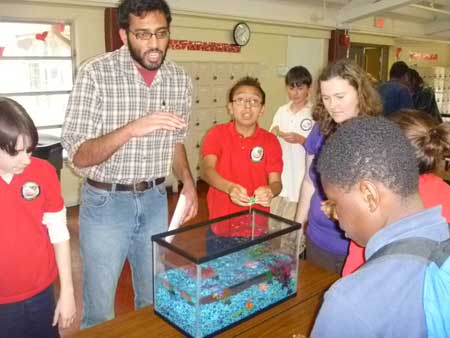 |
| Deep-C Researcher Arvind Shanthram explains plankton’s important place in the ocean food chain during a classroom visit. Photo Credit: Meredith Field |
The Deep-C Consortium has implemented an innovative program, modeled after a successful initiative at Vanderbilt University, that connects middle school students with Deep-C research scientists.
In partnership with local middle school science teachers, a series of three classroom visits are led by Deep-C scientists. The visits focus on providing students with insight into the issues being faced in the Gulf of Mexico and the research that is being conducted to shed light on the long term effects of the 2010 oil spill. Each visit is concluded with a hands-on activity that allows the students to make connections with the concepts that are explored.
Four middle schools in the Florida panhandle participated this year and were visited during Spring 2013. The program provided a great experience for the students and researchers alike!
For more information or to schedule a visit for your classroom This email address is being protected from spambots. You need JavaScript enabled to view it..
| A classroom exercise where students try to achieve neutral buoyancy! Photo credit: Amelia Vaughan |
Interested in implementing a “Scientists in the Schools” program at your institution?
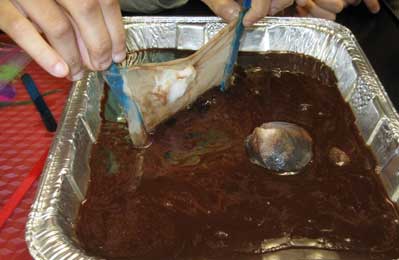 |
| Trying to find the most efficient way to clean up an oil spill! Photo credit: Meredith Field |
Below are sample presentations and lesson plans being used by the Deep-C "Scientists in the Schools" program. If you are interested in implementing this program in your community, This email address is being protected from spambots. You need JavaScript enabled to view it.. We will be happy to provide you with the PowerPoint presentations and lesson plans (see examples below), as well as assessment materials. We may even be able to arrange for guest scientists in your classroom.
General Instructions (Coming Soon)
Part 1: The Great Gulf of Mexico & Phenomenal Physical Oceanography
- Presentation
- Lesson Plan (coming soon)
Part 2: Gulf of Mexico Ecology (LIFE!)
- Presentation
- Lesson Plan (coming soon)
Part 3: Human Impacts on the Gulf of Mexico
- Presentation
- Lesson Plan (coming soon)
Meet our 2013 Scientists in the Schools
|
|
|
|
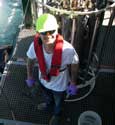 Brian Wells is a PhD student in oceanography at Florida State University. He is interested in tar degradation in Gulf beaches and is conducting experiments on crude oil degradation. Brian Wells is a PhD student in oceanography at Florida State University. He is interested in tar degradation in Gulf beaches and is conducting experiments on crude oil degradation. |
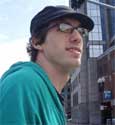 John Kaba is a PhD student in oceanography at Florida State University. He is studying the impact of crude oil on coastal sandy environments and benthic oxygen consumption. John Kaba is a PhD student in oceanography at Florida State University. He is studying the impact of crude oil on coastal sandy environments and benthic oxygen consumption. |
|
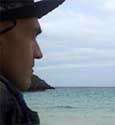 Dr. Nico Wienders is a research faculty at Florida State University and holds a PhD in physical oceanography from France in 2000. Dr. Wienders spends half of his time in the field, preparing instruments and collecting data. Dr. Nico Wienders is a research faculty at Florida State University and holds a PhD in physical oceanography from France in 2000. Dr. Wienders spends half of his time in the field, preparing instruments and collecting data. |
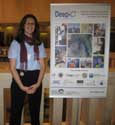 Dr. Hannah Hiester is an Assistant Research Scientist at Florida State University’s Center for Oceanic and Atmospheric Prediction Studies. She is currently working on developing an earth systems model of the DeSoto Canyon. Dr. Hannah Hiester is an Assistant Research Scientist at Florida State University’s Center for Oceanic and Atmospheric Prediction Studies. She is currently working on developing an earth systems model of the DeSoto Canyon. |
|
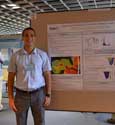 Robbie Nedbor-Gross is a master’s student in meteorology and a research assistant at Florida State University’s Center for Oceanic and Atmospheric Prediction Studies. He is studying the inter-annual variability of the Gulf of Mexico loop current. Robbie Nedbor-Gross is a master’s student in meteorology and a research assistant at Florida State University’s Center for Oceanic and Atmospheric Prediction Studies. He is studying the inter-annual variability of the Gulf of Mexico loop current. |
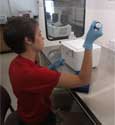 Sarah Tominack is a master’s student in biology at the University of West Florida. She is studying the spatial and temporal variations in the community structure of marine archaea in the Gulf of Mexico. Sarah Tominack is a master’s student in biology at the University of West Florida. She is studying the spatial and temporal variations in the community structure of marine archaea in the Gulf of Mexico. |
Lesson Plans and Activities
Free and ready-to-use lesson plans and activities dealing with the Gulf of Mexico?
Introductory text here? Amelia -- can you help me develop a page to take the place of our little box that appears on the FOR EDUCATORS PAGE now? Let's include some photos of your choice and anything else you think might be useful (perhaps other links?)
For more information This email address is being protected from spambots. You need JavaScript enabled to view it..
Lesson Plans
Activities?
Gulf Oil Observers (GOO)
A citizen scientist initiative involving high school students, teachers, and other volunteers in the collection of data along the shores of the Gulf of Mexico
 |
| WHOI's Dr. Chris Reddy (bottom right) gave WFHSAT students inside information on what it takes to be a scientist. Classroom visits by "real" scientists, along with specially designed lesson plans and coastal expeditions geared toward understanding ocean science and oil spill research, are part of the PROJECT GOO curriculum. |
Even though the Deepwater Horizon oil spill occurred more than three years ago, the process of gathering and analyzing information about the fate of the spilled oil carries on. Deep-C researchers continue to work in the areas affected by the disaster, studying the long-term fate and effects of petroleum hydrocarbons in the Gulf. In 2013, the Deep-C Consortium implemented a citizen science initiative to connect high school students, teachers and other volunteers with leading scientists in this cutting edge research.
The Gulf Oil Observers (GOO) project is an education and outreach effort that trains students and others how to be effective citizen scientists, and then put their new-found knowledge into use, in the lab and during visits to Gulf beaches.
GOO mentors are educators and scientists associated with the Deep-C research project -- a long-term study investigating the environmental consequences of petroleum hydrocarbon release in the deep Gulf on living marine resources and ecosystem health. Classroom visits, in conjunction with specially designed lesson plans and coastal expeditions geared toward understanding ocean science and oil spill research, are part of the Project GOO curriculum.
The first team of GOO "scientists in training" are a group of students at the West Florida High School of Advanced Technology (WFHSAT) in Pensacola, one of two schools selected to participate in the GOO project during the 2013-14 school year. Since Fall 2013, their classroom has been visited by guest lecturers from the Deep-C community, learning first-hand about the research being conducted in the Gulf of the Mexico. Their GOO mentors have led them through a host of hands-on activities and experiments designed to, among other things, help them "think like a scientist."
The West Florida High School students will take a coastal field trip in February 2014 (teaming up with scientists from the Woods Hole Oceanographic Institution) where they will look for and collect oil patty samples along the shores of the Gulf of Mexico. Any samples collected by this team of well-trained "GOO-ies" will be shipped to the Woods Hole Oceanographic Institution (WHOI) for analysis. WHOI scientists will be able to identify the source of the oil (for instance, does it contain oil from the 2010 Deepwater Horizon oil spill?) and use the students' samples in ongoing oil spill research.
What the Oil Samples Can Tell Us
|
|
Understanding what happens to oil discharged in the oceans helps scientists anticipate what crude oil will do when it is spilled and where it will go. And scientists from Woods Hole Oceanographic Institution use a novel fingerprinting technique to identify the source of oil found in patties that are still being collected on the beaches near the site of the Deepwater Horizon disaster.
Tracking oil from a spill like the Deepwater Horizon oil spill over a long period of time helps researchers determine a “mass balance.” We can then account for how much of the oil broke down and where the remaining material still resides. Lastly, if we study the long-term fate of oil, we identify areas where it has the greatest likelihood to last, which in turn, can be used in the next spill when setting priorities on what to “protect” or what to clean-up first.
One of the ways the fate of the oil can be determined is to study an effect called weathering — that is, how oil that is discharged into the environment changes over time. Weathering affects the properties of spilled oil. In part, Dr. Chris Reddy's research provides insights into the natural weathering of oil.
"All chemicals have a different personality towards biodegradation, photochemical breakdown, etc., "Reddy explains. So Reddy is interested in knowing which chemicals are the most susceptible to each weathering processes.
Deep-C will host a teacher workshop in June 2014 for educators with an interest in oil spill research and possible participation in Project GOO. So stay tuned for details... and in the meantime check out the Project GOO Blog for updates by our current GOO-ies.
Meet our 2013-14 GOO Mentors
|
|
|
|
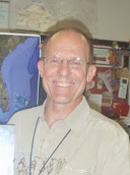 Shawn Walker is a science teacher at the West Florida High School of Advanced Technology in Pensacola and the leader of our first PROJECT GOO student team. Mr. Walker has 30 years of experience as a high school teacher and is a citizen science enthusiast. He is currently participating in a mole crab study in addition to Project GOO with his marine science honors classes. Shawn Walker is a science teacher at the West Florida High School of Advanced Technology in Pensacola and the leader of our first PROJECT GOO student team. Mr. Walker has 30 years of experience as a high school teacher and is a citizen science enthusiast. He is currently participating in a mole crab study in addition to Project GOO with his marine science honors classes. |
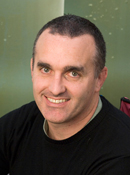 Chris Reddy is a senior scientist in Woods Hole Oceanographic Institution's (WHOI) Department of marine chemistry and geochemistry. Since April 2010, he has devoted most of his research efforts to studying the Deepwater Horizon oil spill in the Gulf. WHOI is a Deep-C partner institution. The Institution is a private, independent, non-profit organization in Falmouth, Mass., dedicated to marine research, engineering, and higher education. Chris Reddy is a senior scientist in Woods Hole Oceanographic Institution's (WHOI) Department of marine chemistry and geochemistry. Since April 2010, he has devoted most of his research efforts to studying the Deepwater Horizon oil spill in the Gulf. WHOI is a Deep-C partner institution. The Institution is a private, independent, non-profit organization in Falmouth, Mass., dedicated to marine research, engineering, and higher education. |
|
|
|
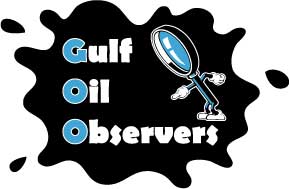 |
Deep-C Sponsors and Mentors Two NOAA-NGI Diversity Internship Participants
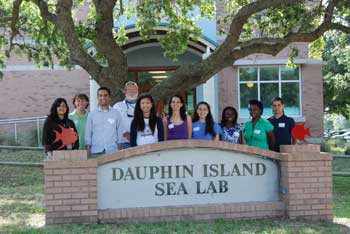 August 11, 2014 -- Each summer, exciting scientific internships are available in a variety of fields studied by National Oceanic and Atmospheric Administration (NOAA) and Northern Gulf Institute (NGI) scientists including coastal science, fisheries management, climate change, ecosystem management, engineering and socio-economic data analysis. The NOAA-NGI Diversity Internship Program offers students from all scientific disciplines (including biological, physical, environmental, information, computer and social sciences as well as environmental justice), as well as education and engineering, are eligible for these competitive positions.
August 11, 2014 -- Each summer, exciting scientific internships are available in a variety of fields studied by National Oceanic and Atmospheric Administration (NOAA) and Northern Gulf Institute (NGI) scientists including coastal science, fisheries management, climate change, ecosystem management, engineering and socio-economic data analysis. The NOAA-NGI Diversity Internship Program offers students from all scientific disciplines (including biological, physical, environmental, information, computer and social sciences as well as environmental justice), as well as education and engineering, are eligible for these competitive positions.
“Selected students work side-by-side with leading scientists and experts in their fields at their respective research institutions and laboratories,” says Dr. Tina Miller-Way, Internship Program PI and Chair of the Discovery Hall Program at the Dauphin Island Sea Lab (DISL). “These internships offer a unique opportunity for on-the-job learning and enable students to explore career opportunities that match their academic and personal interests.”
The NOAA-NGI Diversity Internship Program has been in existence since 2008: DISL has been the home of the program since 2010. To date, the program has hosted 64 interns at 18 locations across the northern Gulf.
This summer, the Deep-C Consortium is supporting two students selected for participation with scientists Drs. Richard Snyder and James Nienow acting as their mentors and facilitating the interns’ research:
 One of the recent advances in marine science h
One of the recent advances in marine science h as been the knowledge that Archaea bacteria, previously known as the extremophiles, live in non-extreme environments. Intern Cynthia Kane (pictured left) working with Dr. Richard Snyder of the University of West Florida is using several microbiology techniques including polymerase chain reactions (PCR), gel electrophoresis, and clonal library creation to analyze water and sediment samples collected from the Gulf of Mexico to determine the different types of Archaea present. To learn more, read Cynthia’s blog at: http://deepcconsortium.blogspot.com/search/label/Cynthia%20Kane%27s%20Internship%20-%20Summer%202014
as been the knowledge that Archaea bacteria, previously known as the extremophiles, live in non-extreme environments. Intern Cynthia Kane (pictured left) working with Dr. Richard Snyder of the University of West Florida is using several microbiology techniques including polymerase chain reactions (PCR), gel electrophoresis, and clonal library creation to analyze water and sediment samples collected from the Gulf of Mexico to determine the different types of Archaea present. To learn more, read Cynthia’s blog at: http://deepcconsortium.blogspot.com/search/label/Cynthia%20Kane%27s%20Internship%20-%20Summer%202014
Chris Horruitiner (pictured right) worked with Dr. James Nienow of Valdosta State University (GA) to investigate the impacts of the Deepwater Horizon event on the phytoplankton populations in the DeSoto Canyon region of the northern Gulf of Mexico. Chris used a combination of net plankton samples (across the entire water column), pigment samples (for HPLC), and discrete Niskin bottle water samples from several depths across the water column analyzed using SEM and imaging flow cytometry to address how phytoplankton populations change with depth and with season in this area. To learn more, read Chris’ blog at: http://deepcconsortium.blogspot.com/2014/07/christopher-horruitiners-internship.html
NOAA-NGI internships last 10 weeks and are open to undergraduate and graduate students currently enrolled in a degree-granting program. There is an emphasis on selecting students from communities and institutions in the northern Gulf of Mexico region, and individuals from demographic groups underrepresented in the NOAA workforce are especially encouraged to apply. For information about future NOAA-NGI internship opportunities visit http://ngi-internship.disl.org/.
The Deep-C (Deep Sea to Coast Connectivity in the Eastern Gulf of Mexico) Consortium is a long-term, interdisciplinary study of deep sea to coast connectivity in the northeastern Gulf of Mexico. The study is investigating the environmental consequences of petroleum hydrocarbon release in the deep Gulf on living marine resources and ecosystem health. Deep-C research is made possible by a grant from BP/The Gulf of Mexico Research Initiative.
 Tina Miller-Way |
Dr. Tina Miller-Way is Chair of Discovery Hall Programs for Education and Outreach at the Dauphin Island Sea Lab (DISL). The lab, located in southern Mobile County off Alabama's Gulf Coast, is well-known for their excellence in education and outreach programming. As a marine laboratory, DISL's mission encompasses marine science education, marine science research, coastal zone management policy and educating the general public through the Estuarium, Dauphin Island Sea Lab's public aquarium. The lab partners with more than 20 colleges and with primary schools to offer marine science coursework up to the graduate level. The research programs of the Dauphin Island Sea Lab range from biogeochemistry and oceanography to systems ecology. Most research focuses on the near-shore and estuarine processes of Mobile Bay, field sites of our internationally-renowned faculty include Mexico, Australia, and Croatia and other countries.
For the Public
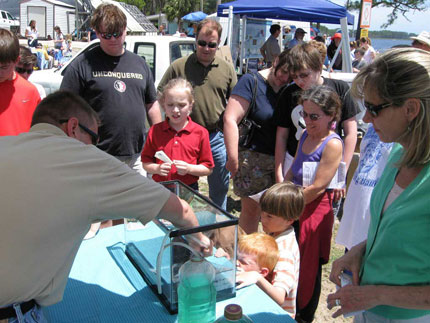
Deep-C researcher Dr. Steve Morey demonstrating internal waves at the FSU Coastal
and Marine Laboratory Open House..
If you are interested in issues related to the 2010 Gulf of Mexico oil spill and the northeastern Gulf of Mexico ecosystem, please Join Our Email List!
Deep-C researchers regularly participate in special "science cafe" forums for face-to-face conversation with scientists, as well as hosting informational booths at events like the annual National High Magnetic Field Laboratory Open House.
You can also follow us on Facebook.

What is the long-term impact of the BP oil spill? Answered by Ian MacDonald, Professor of Oceanography at the Florida State University.
For Students
As scientists and educators, our job is to instill in students some level of the wonder and awe we feel in discovery and to transform their view of the natural world. The Deep-C Consortium works to provide opportunities for engagement for students of all ages, including:
CPALMS VIDEO RESOURCES
This email address is being protected from spambots. You need JavaScript enabled to view it. for more information about Deep-C's education outreach program.
For Educators
The nature of the Deep-C Consortium provides rich opportunities for engagement with educators. Deep-C scientists are investigating the issues involved in understanding and protecting ecological communities in the Gulf of Mexico, and the opportunity to create models that make the interaction of the physical, chemical, and biological realms real. As a result, members of the Deep-C community collaborate regularly with members of the K-12 educational community -- conducting workshops, providing lesson plans and activities, and offering real-life research experiences for teachers (and students).
![]() Please print and share our Deep-C Education & Outreach Fact Sheet.
Please print and share our Deep-C Education & Outreach Fact Sheet.
Some of Deep-C's opportunities and resources for educators include:
LESSON PLANS & OTHER RESOURCES
CPALMS VIDEO RESOURCES
This email address is being protected from spambots. You need JavaScript enabled to view it. for more information about Deep-C's education outreach program.
Deep-C was a four-year, interdisciplinary study of deep sea to coast connectivity in the northeastern Gulf of Mexico.Deep-C is no longer an active research project. The information on this website is for historical reference purposes only.
Home | About Us | Research Areas | Data Center | News & Multimedia | Education & Outreach
© Deep-C Consortium. All Rights Reserved.
This research was made possible by a grant fromThe Gulf of Mexico Research Initiative (GoMRI).
Copyright | Disclaimer | Privacy Policy
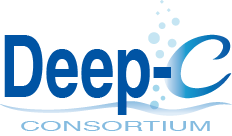
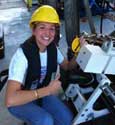 Caroline Johansen is currently in the second year of her Master's degree in Oceanography at Florida State University. She is studying the Dynamics of Hydrocarbon Vents in the Gulf of Mexico. Caroline's interest in Oceanography stems from a love of the ocean that was encouraged having grown up in different
Caroline Johansen is currently in the second year of her Master's degree in Oceanography at Florida State University. She is studying the Dynamics of Hydrocarbon Vents in the Gulf of Mexico. Caroline's interest in Oceanography stems from a love of the ocean that was encouraged having grown up in different 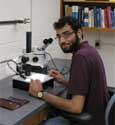 Arvind Shantharam is a research assistant and PhD student in the Oceanography department at Florida State University. He is studying sediment macrofauna in DeSoto Canyon.
Arvind Shantharam is a research assistant and PhD student in the Oceanography department at Florida State University. He is studying sediment macrofauna in DeSoto Canyon.
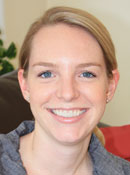 Danielle Groenen is a member of Deep-C's education and outreach team and coordinator of PROJECT GOO. Her background includes working in climate change outreach at the University of California, Davis and three years experience as a high school physics teacher in Tampa, FL. She recently began pursuing a PhD in Meteorology from the Florida State University.
Danielle Groenen is a member of Deep-C's education and outreach team and coordinator of PROJECT GOO. Her background includes working in climate change outreach at the University of California, Davis and three years experience as a high school physics teacher in Tampa, FL. She recently began pursuing a PhD in Meteorology from the Florida State University. 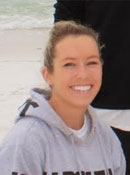
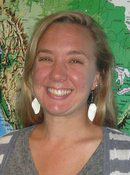

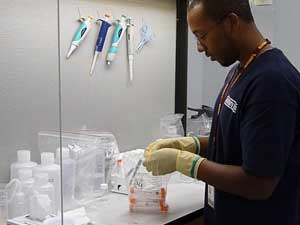
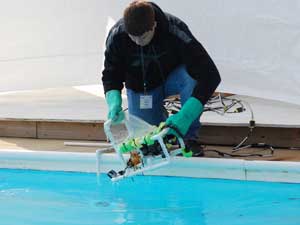
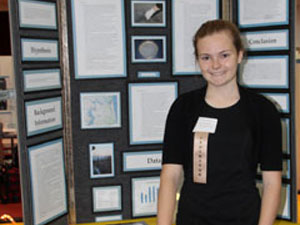
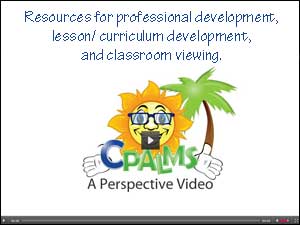
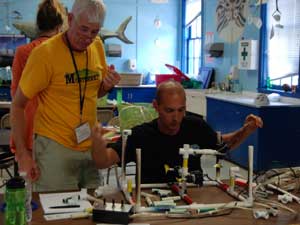 Training provides educators with tools to teach marine science using Remotely Operated Vehicles (ROVs). The teacher program is tied to an annual student competition.
Training provides educators with tools to teach marine science using Remotely Operated Vehicles (ROVs). The teacher program is tied to an annual student competition.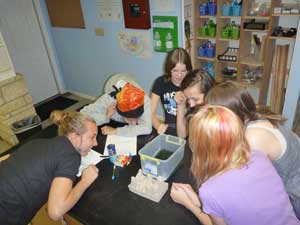 Free and ready-to-use lesson plans and other resources dealing with the Gulf of Mexico.
Free and ready-to-use lesson plans and other resources dealing with the Gulf of Mexico.